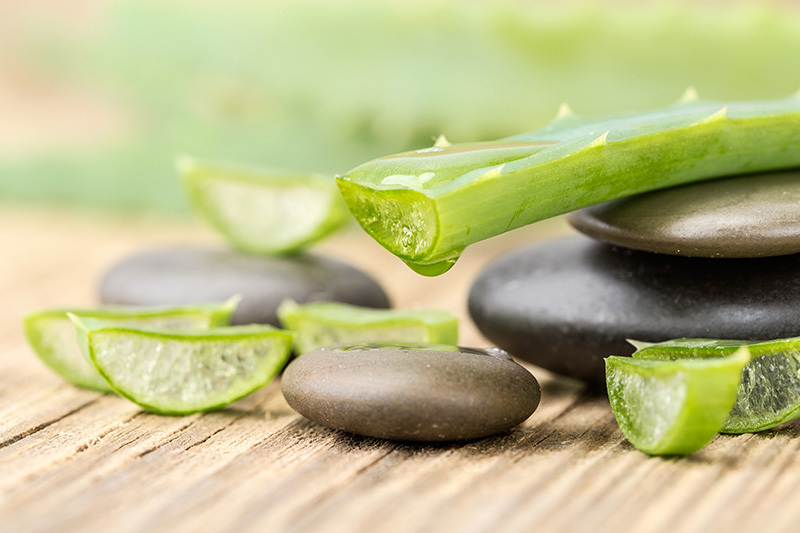Unravel the Mysteries: 7 Facts About Tulips You Didn't Know
Posted on 26/08/2025
Unravel the Mysteries: 7 Facts About Tulips You Didn't Know
Are you captivated by the enchanting blooms of tulips? While these vibrant flowers adorn gardens and homes every spring, there's a world of intriguing stories and details hidden behind their colorful petals. Unraveling the mysteries of tulips not only enhances your appreciation for their beauty but also allows you to delve into centuries of history, art, science, and culture. Let's explore seven astonishing facts about tulips that even seasoned gardeners and flower enthusiasts may find surprising.
1. Tulips: Not Native to Holland
When you think of tulips, the first image that likely comes to mind is the breathtaking tulip fields of the Netherlands. However, one of the top unheard facts about tulips is their true origin. Tulips are not originally Dutch. Their roots (literally and figuratively) trace back thousands of miles east.
Central Asia: The Real Birthplace
- Tulips originated in the mountainous regions of Central Asia, particularly modern-day Kazakhstan, Afghanistan, and the Tien Shan mountains.
- These wild tulips were cultivated by the Turks as early as the 10th century, especially in the Ottoman Empire.
- Exotic tulip bulbs made their way to Western Europe in the 16th century, where they quickly captured hearts and inspired entire cultures.
Tulips didn't just bring color to Dutch fields; they brought a sense of wonder and influenced European art, trade, and society.

2. The Tulip Mania: The World's First Economic Bubble
One of the most fascinating tulip facts entwines flowers and finance. In the 17th century, tulips sparked a period known as Tulip Mania in the Netherlands--widely regarded as the first recorded economic bubble.
How Did Tulip Mania Unfold?
- Tulip bulbs became so valuable that some rare varieties sold for more than the price of a lavish house along Amsterdam's canals.
- Traders speculated on tulip bulb contracts, buying and selling "futures" much like today's stock markets.
- The bubble burst in 1637, causing bulb prices to collapse and leaving many investors bankrupt.
This historic event didn't diminish the tulip's charm--it only added to the flower's legendary status and deep cultural roots in the Netherlands.
3. A Spectrum of Color - Except for True Blue
Dreaming of a true blue tulip? You're not alone. Another intriguing tulip fact is that tulips do not naturally produce a blue pigment. While breeders and growers have introduced thousands of stunning tulip varieties, you won't find a real blue among them.
The Challenge of Blue Tulips
- Tulips boast over 3,000 registered varieties in nearly every color imaginable: red, yellow, white, pink, purple, black, and more.
- Even "blue" tulip varieties are typically shades of violet or lavender, the result of selective breeding rather than true blue pigmentation.
- Botanists continue to experiment with genetic engineering to create an authentic blue tulip--considered the "holy grail" for many flower developers.
When you stroll through a tulip garden, keep in mind that the elusive blue remains one of nature's ongoing mysteries.
4. Symbolism and Tulip Legends
Tulips have inspired poets, painters, and storytellers for centuries. Beyond their undeniable beauty, tulips carry deep symbolic meanings in many cultures.
The Language of Tulips
- In Turkish folklore, the tulip is a symbol of paradise, abundance, and perfect love.
- Victorians often used specific tulip colors to express feelings: red tulips for true love, yellow for cheerful thoughts, while purple tulips signify royalty.
- Some ancient legends claim the tulip's cup-shaped bloom collected the tears of lovers--adding a romantic aura to their springtime appearance.
Whether you offer tulips as a gift or plant them in your garden, these fascinating tulip meanings and legends add extra layers of significance to their blooms.
5. Tulips and Artistic Inspiration
The relationship between tulips and art is as rich as their vibrant hues. From detailed 17th-century Dutch paintings to stylized motifs in textiles, tulips have served as muses for artists across the world.
Tulips in Artistic Movements
- The "Tulip Era" in Ottoman Turkey (early 1700s) spurred decorative arts where tulip motifs adorned everything from ceramics to palace gardens.
- Dutch still-life painters depicted elaborate arrangements of tulips, emphasizing their rarity and prestige during the Golden Age.
- Even today, tulips feature in modern floral design and urban landscaping as icons of spring and renewal.
The next time you spot tulips in a museum or as part of a city installation, remember their remarkable journey as global artistic inspirations.
6. The Science of Tulip Colors and Patterns
Did you know that the mesmerizing stripes and streaks in some tulip petals led to one of botany's early scientific breakthroughs? Let's uncover the science behind tulip variegation.
How Do Tulips Get Their Patterns?
- The most famous and coveted tulip patterns emerged as a result of a viral infection, specifically the tulip breaking virus ("mosaic virus").
- This virus, unknowingly spread by aphids, causes blossoms to develop dramatic streaks and "broken" colors.
- While some historical tulip varieties owe their unique looks to this virus, today's breeders use safe, virus-free techniques for producing variegated tulips.
The scientific study of tulip colors and genetics paved the way for modern plant virology and breeding methods--proving that tulips have profound impacts far beyond the garden.
7. Tulip Festivals: A Global Celebration
Springtime brings an explosion of tulip festivals worldwide, transforming fields and parks into spectacular seas of color. These events celebrate tulip history, culture, and community spirit on a grand scale.
Unmissable Tulip Festivals Around the World
- Keukenhof Gardens (Netherlands): Known as the "Garden of Europe," this iconic site displays over seven million tulip bulbs every spring.
- Canadian Tulip Festival (Ottawa): Commencing every May, this festival symbolizes friendship between Canada and the Netherlands, marked by stunning displays and cultural events.
- Skagit Valley Tulip Festival (USA): Located in Washington State, the festival features sprawling multicolored fields with tours, photo opportunities, and family activities.
- Istanbul Tulip Festival (Turkey): A nod to tulips' origins, this festival fills parks and historical sites with vibrant blossoms throughout the city.
If you're a tulip lover or an aspiring gardener, adding a tulip festival to your travel list is a memorable way to connect with the magnificence and global legacy of these flowers.

Bonus Fact: Tulips Are Edible (But Eat With Care!)
As a quirky bonus among curious tulip trivia, did you know tulips are technically edible? During the Dutch famine of World War II, people turned to tulip bulbs as emergency food. But be careful--tulip bulbs can be toxic if not prepared properly and are not recommended for consumption today.
- Some chefs have used tulip petals as vibrant garnish in gourmet dishes and salads, but only certain varieties are safe and suitable.
When it comes to tulips, it's best to let their beauty feast your eyes, not your appetite!
Conclusion: The Enduring Allure and Hidden Depths of Tulips
From ancient Silk Road gardens to modern-day tulip festivals, the story of tulips is one of adventure, art, science, and culture. Each colorful bloom is a window into a hidden world, full of stories yet to be told.
- Unravel the mysteries of tulips and you'll find a flower that changed the course of history.
- Discover their journey from Asian mountains to Dutch fields--and their impact on art, science, and even economies.
- Appreciate their rich symbolism and unique genetic quirks.
As you gaze at a bouquet of tulips or stroll among their vivid rows, remember these seven remarkable tulip facts. Whether you're a gardener, history buff, or simply a lover of beauty, the tulip offers far more than meets the eye.
Did you enjoy learning about tulips? Share your favorite fact or your own tulip stories in the comments below!
Latest Posts
Achieving Expert Orchid Growing Techniques
Unravel the Mysteries: 7 Facts About Tulips You Didn't Know
Unlock the Unknown Facts About Sunflowers





